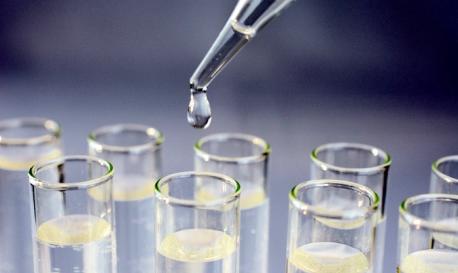Overview
What if clinicians could diagnose viral infections, gum disease, salivary gland disorders, diabetes, or even cancer in as little as five minutes using just a sample of saliva? This concept, called salivary diagnostics, has immense potential. Salivary diagnostics combine the power of chemistry, biology, computational science, and engineering within a portable device that can analyze, at the point of care, indicators of a variety of diseases and conditions affecting the mouth and the whole body.
Why is Salivary Diagnostics Research Important?
Saliva contains many of the same molecules (biomarkers) found in blood that are already being used for diagnostics. Unlike blood, however, saliva has the advantage of being easy to collect. Further advantages of salivary diagnostics include:
- Fast – results can be obtained within minutes to detect or monitor the progression of a disease or the maintenance of health.
- Safe – collecting saliva is non-invasive and easily performed, without the risk of bleeding or infection that can occur with blood draws.
- Repeatable – regular saliva sampling can be used to monitor health or follow the progression of a disease or disorder over time.
- Cost effective – well suited for use in places where health and energy resources may be limited; could have a major impact on the costs and outcomes of healthcare services in rural and urban areas.
How is NIDCR Investing in Salivary Diagnostics Research?
NIDCR invested over $3 million into salivary diagnostics research in fiscal year 2017. NIDCR supports basic, translational, and clinical research studies to foster the development and use of salivary biomarkers and devices.
NIDCR is advancing salivary diagnostics to easily, accurately, and rapidly detect diseases or monitor health.
Examples of NIDCR-supported research include:
- Oral cancers – supporting basic research to identify HPV-related oral cancer biomarkers in saliva; HPV status impacts a patient’s response to cancer treatment and survival.
- Sleep disorders – exploring the potential of an orally implanted device to monitor hourly levels of the sleep hormone melatonin.
- HIV – developing a simplified system that detects anti-HIV antibodies and viral genetic information in a single specimen of blood or saliva.
- Sjögren’s syndrome – building a new, compact sensor to capture and analyze salivary biomarkers for Sjögren’s syndrome, an autoimmune disease that damages salivary glands.
- Zika virus – adapting existing technologies to detect Zika virus rapidly in saliva.
- Pre-cancerous oral lesions – developing a device to assist in chair-side detection and monitoring of suspicious lesions.
- Psychological stress – creating a wearable oral sensor that supports real-time monitoring of the stress hormone cortisol in saliva.


